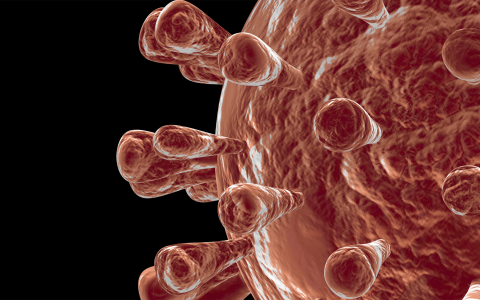
LEARNING, INFERENCE AND MEMORY
Akrami Lab
Research Area
Finding and exploiting patterns and regularities in the environment is a critical brain function for animals living in a complex yet structured world. Individuals can deduce abstract relations, and learn these regularities through experience, and use this prior information to guide future behaviour. The process of inferring statistical patterns and priors constitutes the foundation of further cognitive abilities. How do animals infer these patterns and relations, and how priors are formed, represented, and stored?
Our past, present, and future are intimately linked by our memories of various timescales. The brain is constantly engaged in storing new memories and executing actions while integrating incoming sensory input with past memories and internal models of the world. What are the fundamental principles of (sensory) memory organization, and their utilization in inference problems? How are learned priors integrated in memory, or used in combination with new sensory information?
In our lab, we employ a synergistic combination of theory and experiment to study the fundamental principles by which the nervous system computes, represents and integrates various forms of sensory memories and priors in the process of learning and inferring meaningful statistical patterns and abstract relations in the environment. We use high-throughput training to combine sophisticated, well-controlled and quantifiable behavioural paradigms with powerful tools to monitor and manipulate neural circuits.
In all of our research programs, experiments are intertwined with hypotheses drawn from theoretical investigations. Drawing on the technical expertise in theoretical neuroscience and neural network dynamics, along with the expertise in rodent cognition, behavioural modelling, imaging, electrophysiological recordings and optogenetics, we aim to bridge our understanding of memory and (statistical) learning at the behavioural level with its implementation at the circuit and systems level.
Cross-species/comparative experiments
To unravel the common governing algorithms and mechanisms that might have been preserved throughout evolution, it is extremely beneficial to take a comparative approach, namely to study the same behavior across different species. We currently do comparative human psychophysics/EEG, in different modalities, using similar behavioral paradigms to those used in the rodent experiments. The lab collaborates with various researchers at UCL and other places who do human/bird/insect experiments using different methods ranging from neuroimaging techniques to single cell recordings.
Computational models
At our lab, computational models are part of our comparative studies, like any other biological species, in order to systematically inform and constrain the experimental designs and data interpretations, and conversely be constrained by experimental findings.
Research Topics
1) Working Memory
Memory is a key building block of cognition. Whether it is short, such as remembering a phone number before dialing it, or long like the rules of playing chess, the brain is constantly engaged in storing new memories and executing actions while integrating sensory information with past memories and the subject’s internal model of the task.
Working memory (WM), the ability to store and manipulate information for short periods of time, is an example where contextual information becomes an integral part of perception and memory. Despite extensive research, mechanisms underlying WM have remained obscure. A particular type of WM task, called Parametric Working Memory (PWM), is delayed comparison, the sequential comparison of two graded stimuli separated by a delay period of a few seconds, which forces the subject to maintain an analog value in memory. An identifying feature of PWM is that it is adaptive to various factors in the task, e.g the saliency of the stimuli, the delay duration, and task history. PWM is a unique WM behavioral paradigm in which different stages --sensory processing, memory maintenance, and decision making-- can be precisely parsed out and deconfounded. In addition, using memory items that lie on a quantitative, graded, continuum greatly facilitates both analysis and modeling of the data.
Over the past couple of decades, primates have been the focus of research on neural correlates of PWM. However, PWM paradigms were assumed impossible in rodents due to the difficulty of training protocols. Our recent comparative human/rodent psychophysics experiments showed that rats’ PWM capacities are remarkably similar to humans’. The discovery of higher cognitive functions in rodents allows mental processes that once could be studied only in humans and monkeys to be addressed in the rodent brain. This makes it possible to harness the rapidly expanding toolkit of cutting-edge technical advantages uniquely offered by rodent preparations, in order to identify, manipulate, and functionally dissect neuronal populations at the circuit level.
By employing variants of PWM paradigm and designing novel memory tasks in rodents, we will address fundamental, unanswered questions about the neural basis of sensory memory formation, its maintenance, update and recall: 1) Which brain regions are required for WM? 2) What is the content of WM? (feature extraction from sensory to memory) 3) What neural mechanisms underlie maintenance and update of WM? 4) How are different brain regions recruited to support various timescales of WM? 5) Directly testing various theoretical models of WM maintenance like reverberating neural activities or short-term synaptic facilitations.
2) Priors
There have been decades of research on how prior stimulus history affects perception and memory. This research has been psychophysical (for example, much work on Bayesian influences on perception), theoretical, and neurophysiological, using human subjects and fMRI or EEG. Some of the theoretical proposals (e.g., the work of Ma, Pouget and colleagues) have involved models of networks of single neurons. But, little is known about how priors are formed, represented, stored in memory, or used in combination with incoming sensory information. We exploit rodent behavioral and physiological approaches, together with computational modeling, to study the neural underpinnings of the formation, storage, and utilization of experience-dependent priors. Specifically, we study experience-dependent priors in two different contexts: a) in conjunction with sensory WM, and b) as perceptual biases independent of their interaction with sensory WM.
Our findings in PWM tasks identify the Posterior Parietal Cortex (PPC) as a critical node supporting priors of medium length (i.e. several previous trials). However, it remains unclear whether priors are computed and represented by the PPC itself, or in conjunction with other areas heavily interconnected with PPC. Coupling activity measurement and (projection specific) perturbation here will allow us to further investigate the circuitry that sends input to PPC or reads from PPC.
Theoretical proposals of how probabilities can be represented in the brain fall into two main categories: 1) Parameter-based schemes, in which neural activity represents parameters of a probability distribution describing statistics of the sensory variables, and 2) Sample-based schemes, in which neural activity represents sensory variables themselves. These hypotheses can be distinguished by fitting different models to recordings from PPC (and other relevant areas), in order to determine which type of information is better reflected in their activity. We use experimental results to develop and constrain new circuit-level models of the computations that underlie formation of priors.
3) Inferring abstract relations
To recognize and generalize abstract relations is a fundamental component of cognition. Both human and nonhuman organisms are sensitive to statistical regularities in sensory inputs that support functions including communication, and sequence learning. Statistical learning has been proposed as a key mechanism for extracting regularities distributed over the stream of inputs across sensory modalities and cognitive domains.
Over the past 20 years, it has been shown that human neonates, rhesus monkeys, cotton-top tamarins, rats, juvenile Bengalese finches, zebra finches, and chicks, once presented with simple rule-governed patterned sequences of inputs (e.g. ABB, AAB, and ABA), were able to distinguish patterns on the basis of the repetition. This learning capability, despite sounding trivial, can be the foundation of further cognitive abilities. What's the neural basis of statistical learning of abstract relations?
We recruit novel behavioral designs to probe common ability to learn various scales of temporal patterns and relations across different species.













